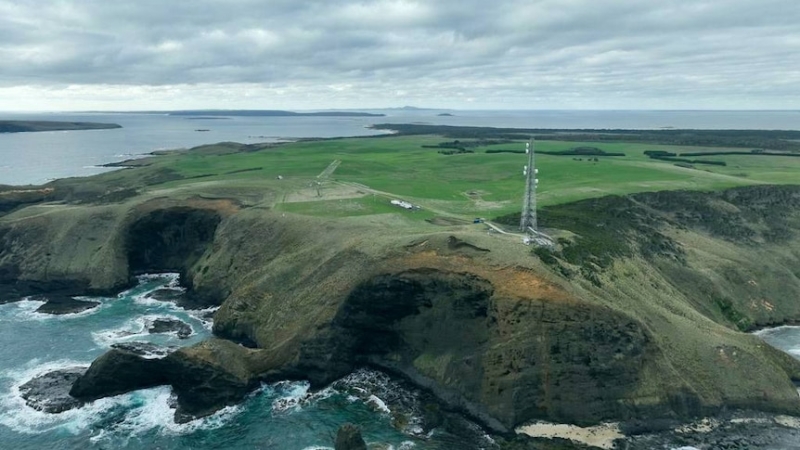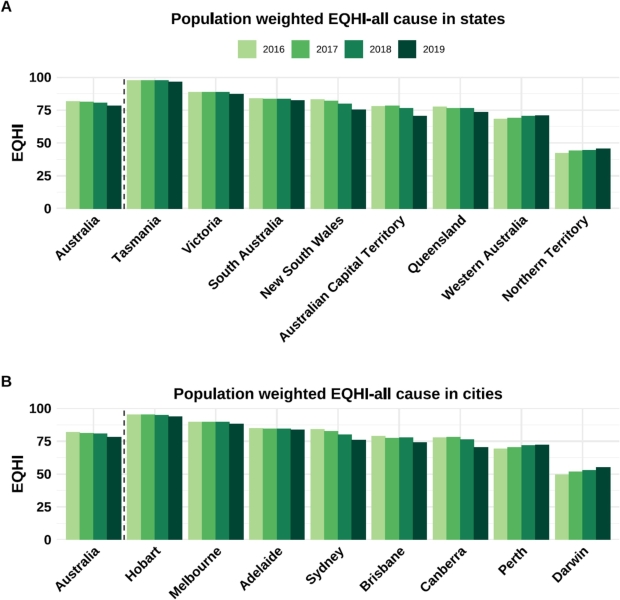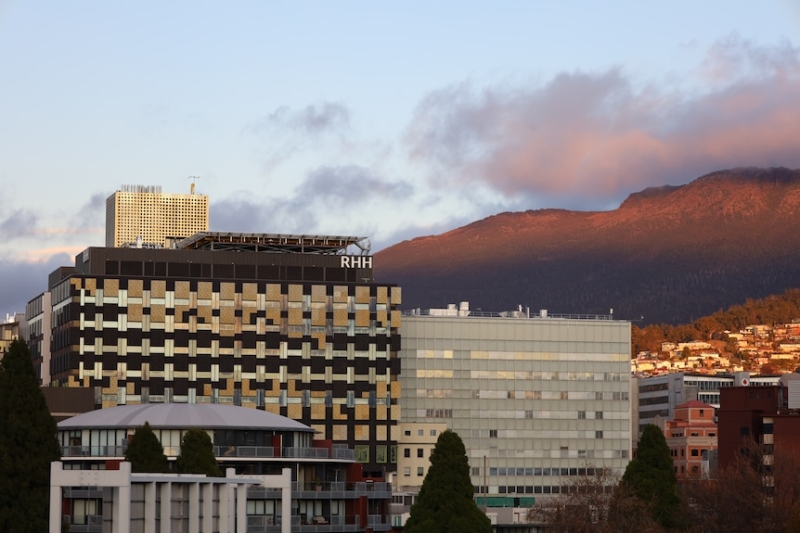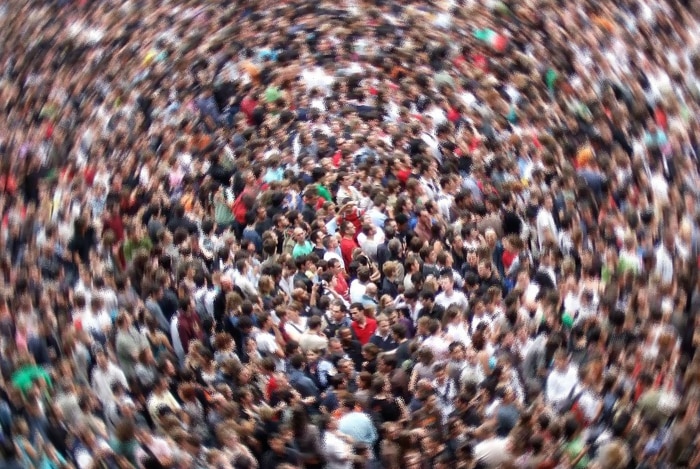Tasmania scored well with green space, air quality and temperature, as well as lower building density and lower road density. (ABC Open contributor Carmel Boyd)
In short:
A new study from a Monash University-led team says Tasmania is the healthiest place in Australia to live, thanks to the environmental conditions.
However, new data shows the state's healthcare system is under strain and lagging behind the rest of the nation on some key indicators.
The study's author says environmental conditions, genetics and lifestyle are all equal contributors to overall health.
Tasmania is famed for its clean air, temperate climate and sprawling wilderness and it turns out those environmental conditions may have big health benefits.
A team of researchers led by Monash University has named Tasmania the 'healthiest state or territory to live in', and Hobart as the healthiest capital to live in.
This place has the purest air in the planet and it's helping to unravel a climate mystery
Photo shows Aerial Kennaook_Cape Grim baseline air monitoring station in Tasmania

For the study, the team combined mortality data with environmental exposure data including air quality, temperature, road and building density, green space and socio-economic status, to rank all states and territories on an Environmental Quality Health Index (EQHI).
According to Professor Yuming Guo from Monash's School of Public Health and Preventative Medicine, Tasmania scored well on several factors.
"Higher green space, better air quality and the lower temperature — also lower building density and lower road density," he said.
Victoria and Melbourne were the second-highest-ranked jurisdiction and city, beating South Australia and Adelaide.
"Melbourne's higher score compared to Sydney reflects a combination of better air quality, favourable climate and other environmental conditions, and higher socio-economic advantages, which are linked to lower health risks," said Professor Guo.
The Northern Territory and Darwin were the lowest-ranked jurisdiction and city, while Perth and Western Australia also scored poorly.
Professor Guo said lower socio-economic status and higher temperatures were the reason for Darwin's lowly ranking.

A Monash University-led research team found Tasmania and Hobart were the healthiest state/territory and capital city to live in, while the Northern Territory and Darwin were rated the unhealthiest. (Monash University)
The 12 environmental and socio-economic factors in determining the ranking included:
- Air quality, as fine particulate matter (PM2.5)
- Air quality, as ozone (O3)
- Green space (normalised difference vegetation index)
- Night-time light
- Mean temperature in summer
- Mean temperature in winter
- Temperature variability in summer
- Temperature variability in winter
- Relative humidity
- Building density
- Road density
- Socio-economic status (the index of relative socio-economic advantage and disadvantage)

Median ambulance response times in Hobart were the slowest of any capital city in 2023-24, while only 50.4 per cent of Tasmanian patients exited the emergency department within 4 hours — fewer than any other state. ( ABC News: Maren Preuss )
The healthiest place? New data says otherwise
Tasmanian Deputy Premier Guy Barnett welcomed the study, which he claimed showed Tasmania was the "healthiest state".
However, data released this week as part of the Productivity Commission's annual Report on Government Services paints a different picture of health in Tasmania.
The state's mortality rate was the second highest in the nation in 2023, at 563.4 deaths per 100,000 people — 10 per cent higher than the national average of 507.9.

Tasmania's mortality rate was the second highest in the nation in 2023, 10 per cent higher than the national average. ( ABC News: Loretta Lohberger )
Tasmania also ranked poorly on healthcare affordability measures in the same period, with 11.2 per cent of Tasmanians delaying a visit to see a GP due to the cost — the most in the nation.
A spokesperson for the Tasmanian government pointed to "record investments" in health services worth $8.8 million per day.
"We're continuing to deliver on the ED review recommendations, and our transfer of care protocol is working — 9,300 hours have been saved under our policy," they said.
"The federal government is continuing to chronically underfund our GPs, and in the meantime, the Tasmanian government is stepping up and supporting our GPs through a range of initiatives."

Tasmania's median age of 42 years at the time of the 2021 Census was four years older than the national median of 38. (Pixabay)
Sicker people need more health care, expert says
Martin Hensher, professor of healthcare sustainability at the University of Tasmania's Menzies Institute for Medical Research, said Monash University's study was interesting but cautioned against reading too much into it.
"What it's saying is that Tasmania has the healthiest environment — that's a really important thing to understand — not necessarily that Tasmanians are the healthiest people, but the environment in which we live seems to have the highest environmental quality in Australia."
He pointed out many of the problems affecting health care in the state were being seen nationally and across the developed world, however, Tasmanians had "typically" been in poorer health comparatively.
"If you have less-healthy people, other things being equal, they're going to likely need and demand more health care," he said.
"However, many of the problems in the healthcare system go beyond simply the levels of demand for care that we have, but actually reflect more structural problems."
Better environments a 'human right'
Professor Guo said environmental qualities were just one factor affecting human health — the others being genetics and lifestyle.
"If two persons have the same genetics and have the same behaviour, but they are living in different areas — one in Tasmania and another one in Darwin — the health for the person in Tasmania might be better than in Darwin."
It is hoped the study — and measures like EHQI — might prompt more thought from governments about the environment in urban design, particularly in road and building density.
"A better environment is a human right, they have the power to improve the environment," said Professor Guo.

